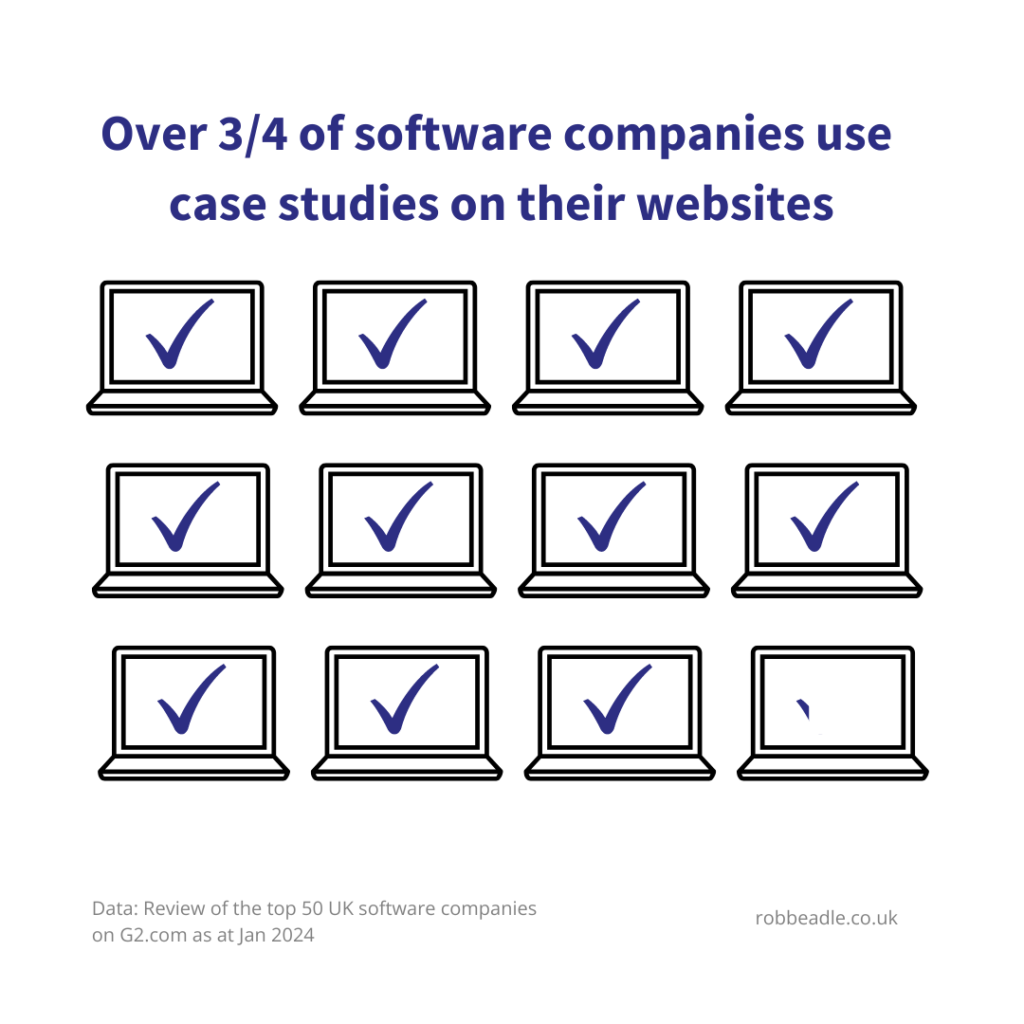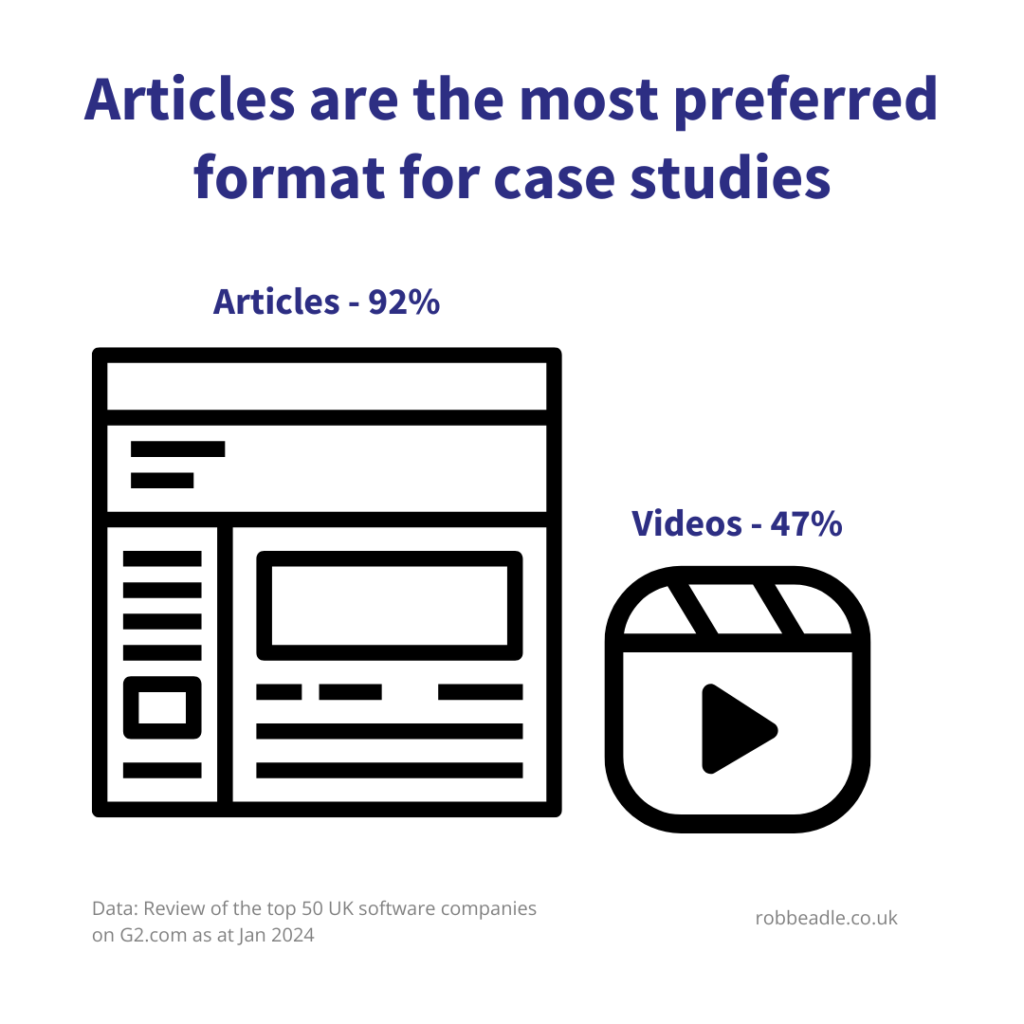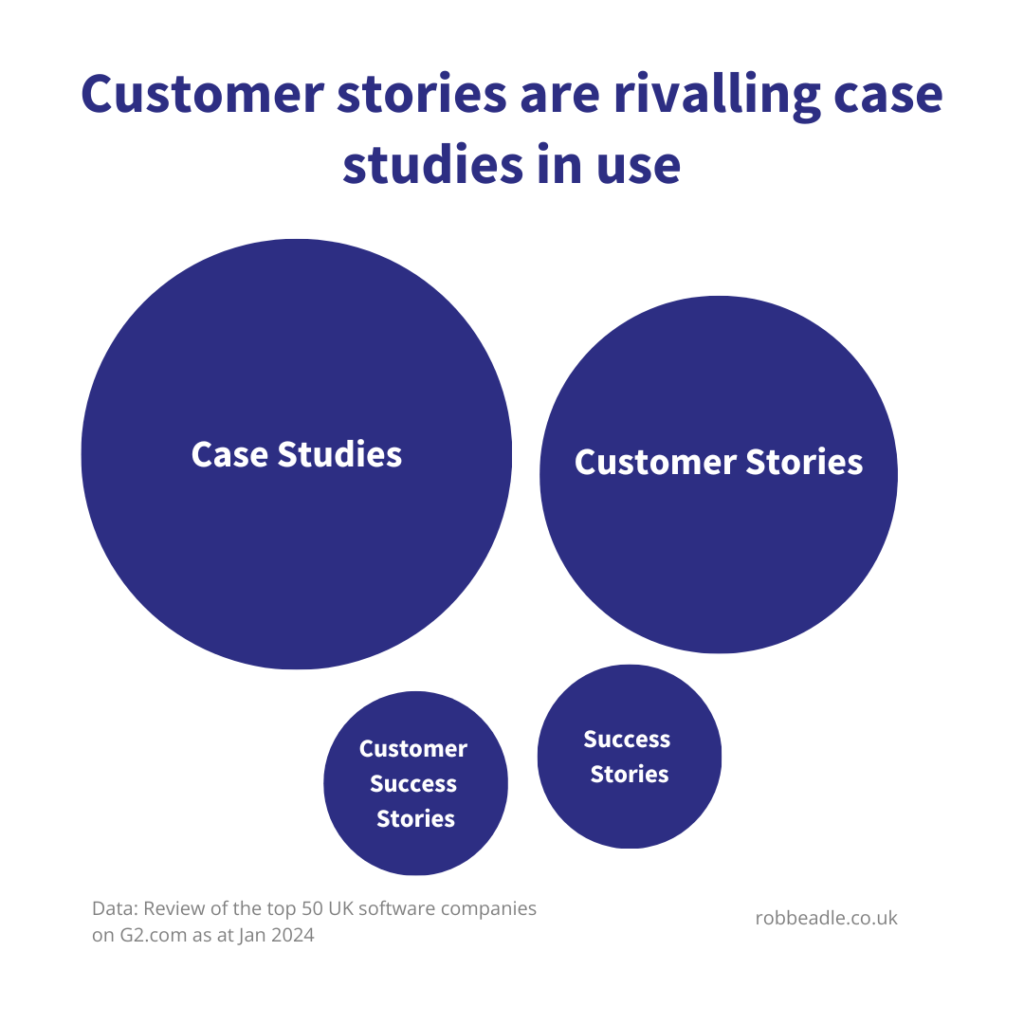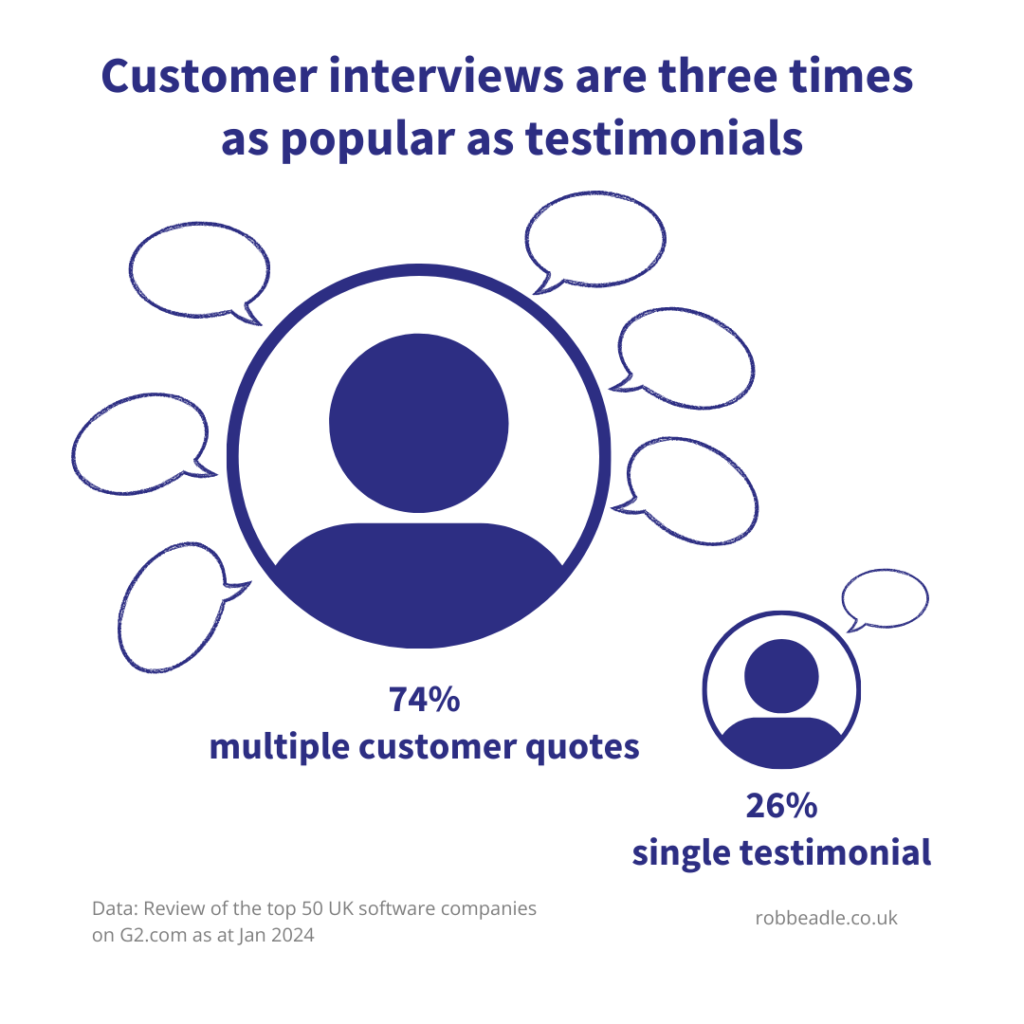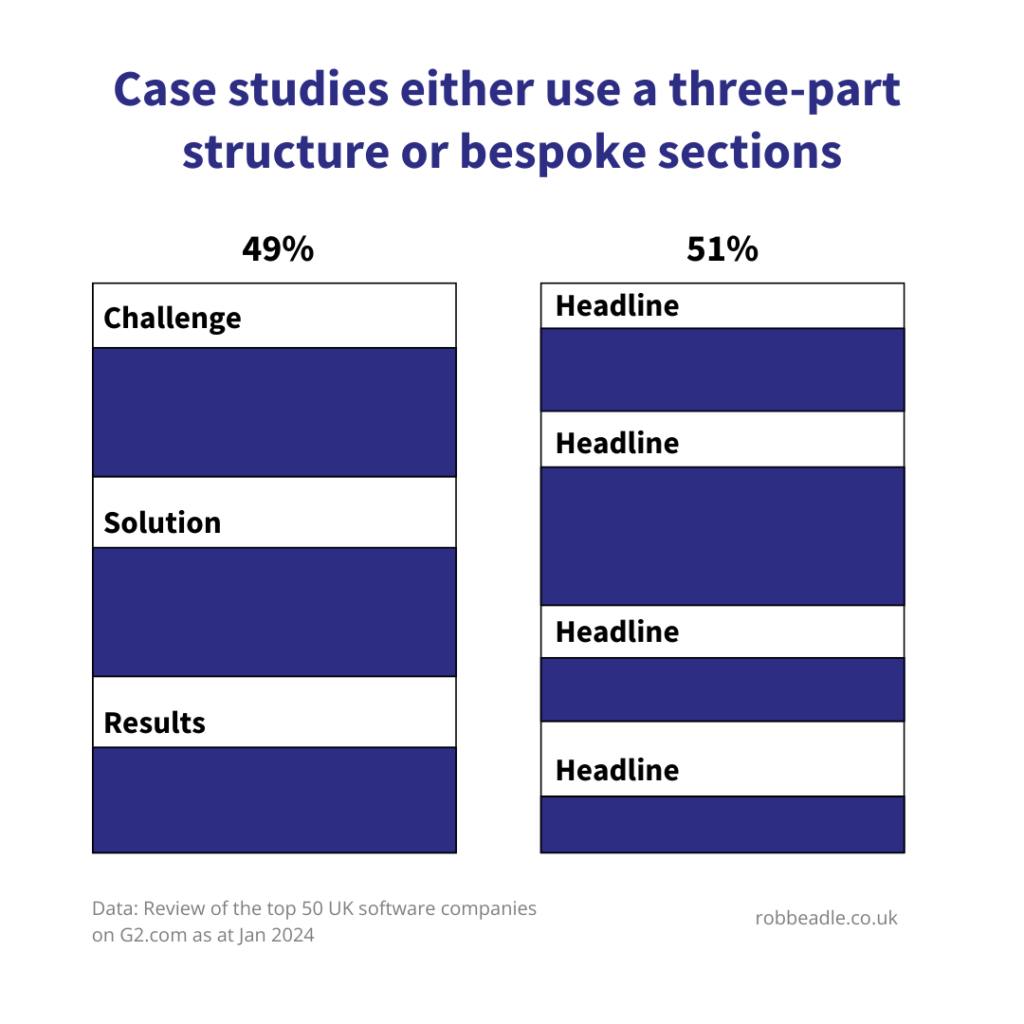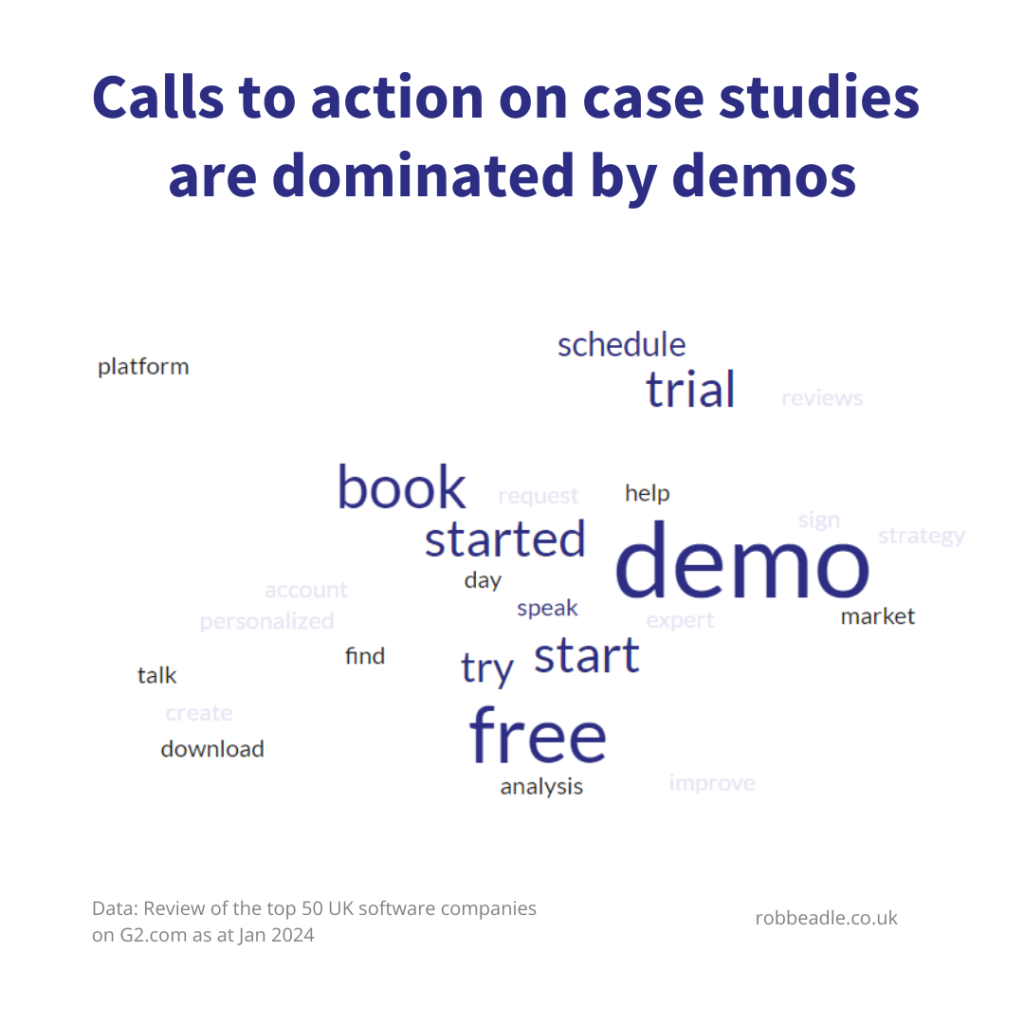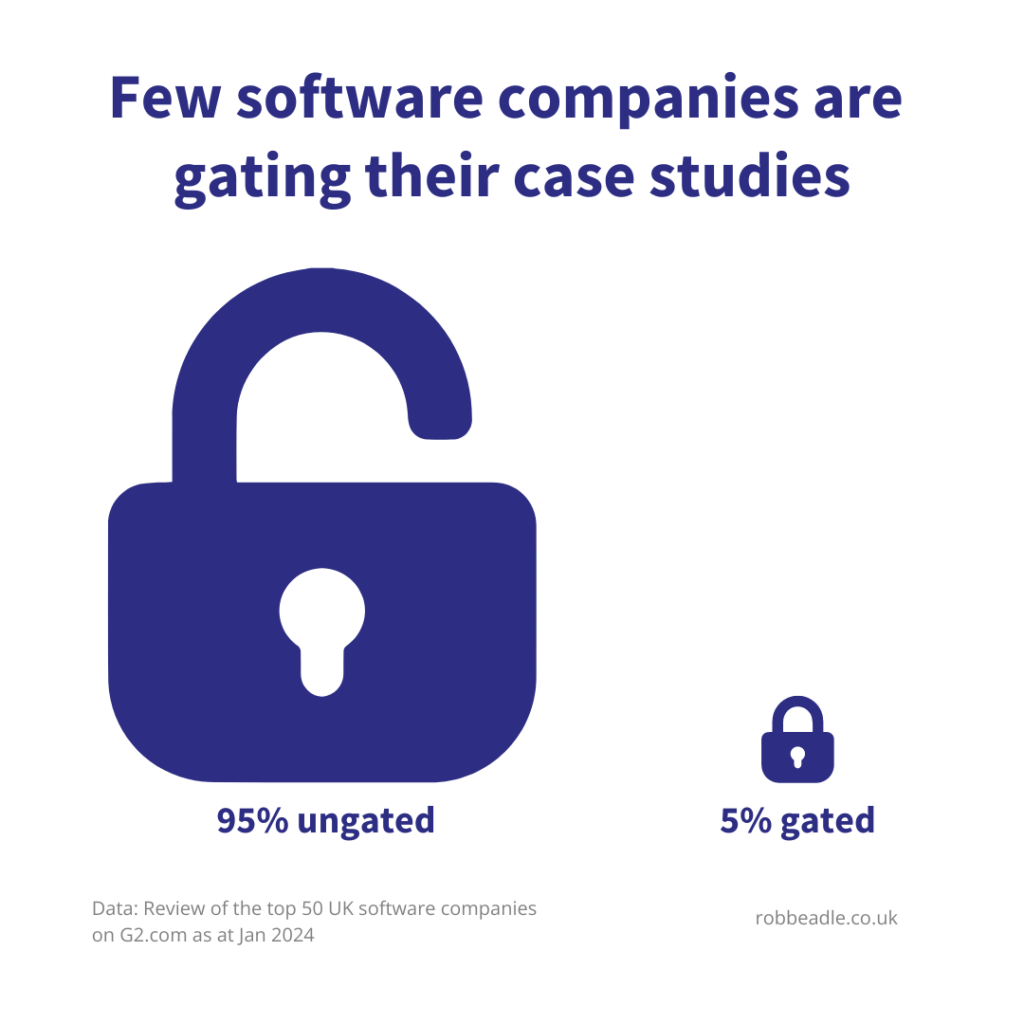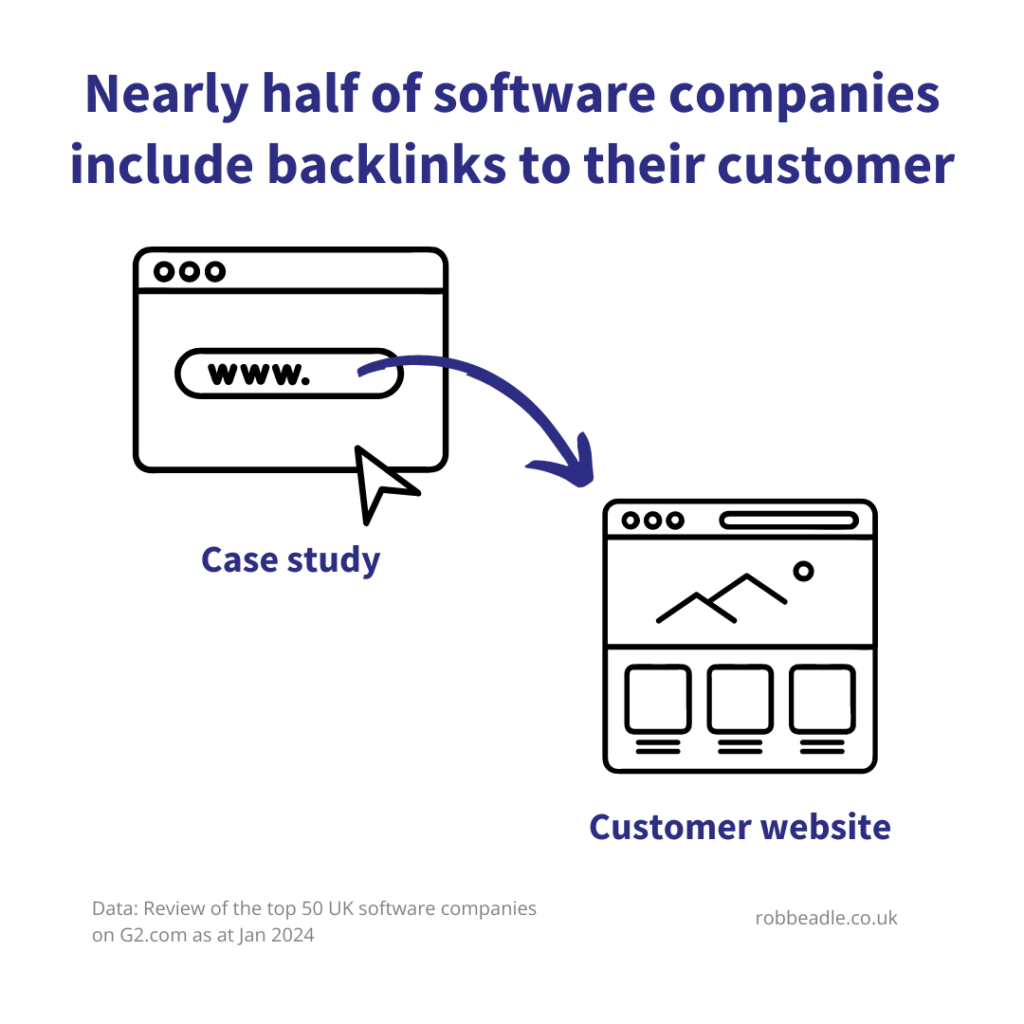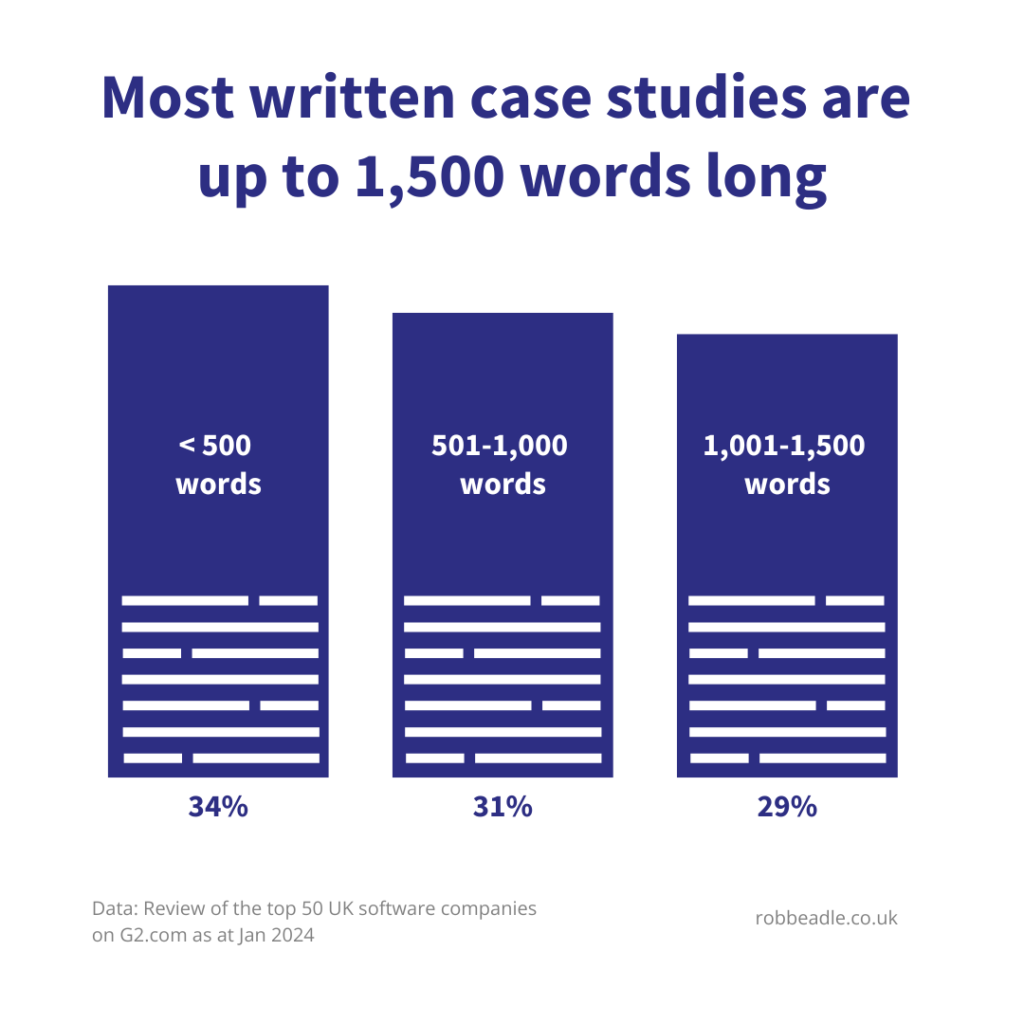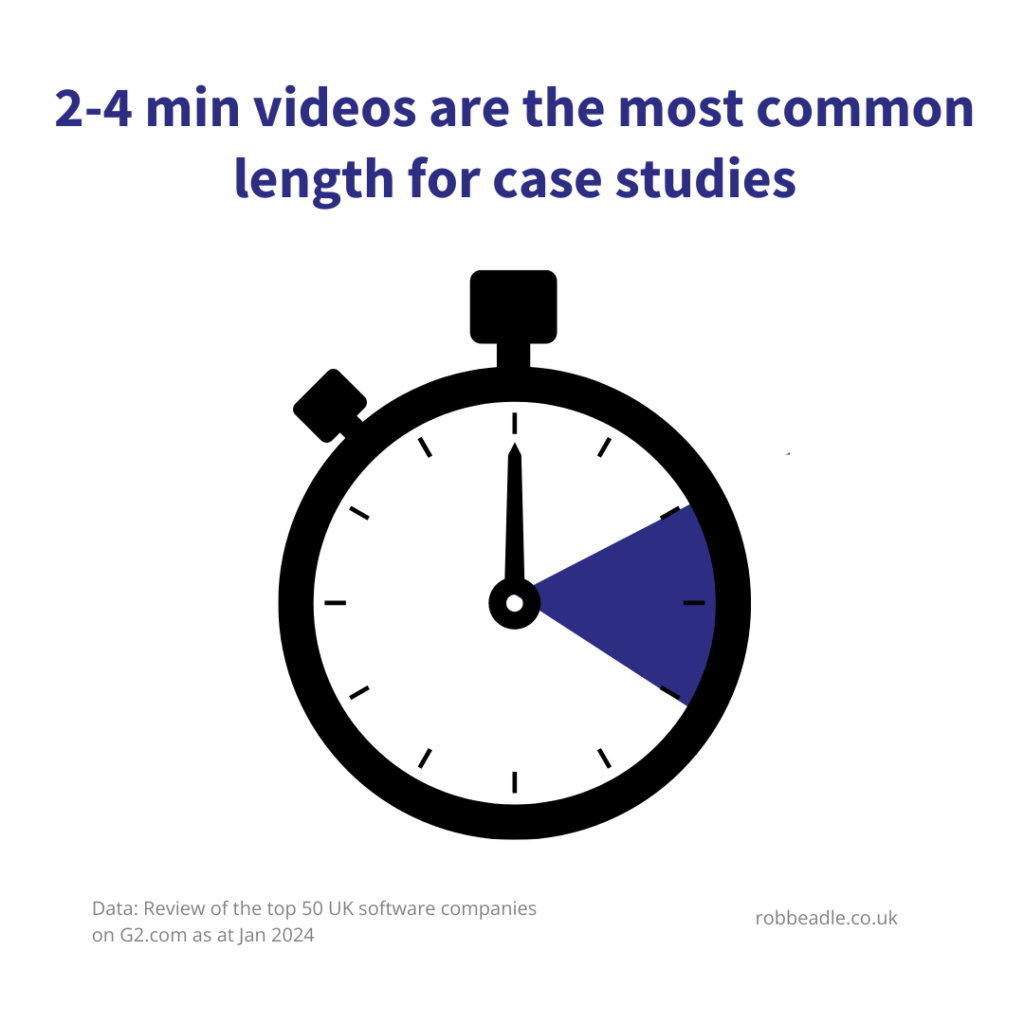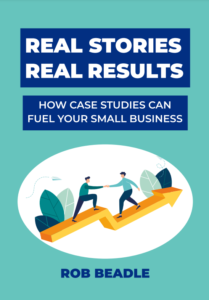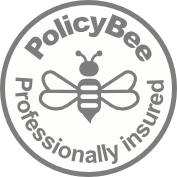
How the Top 50 UK Software Companies Are Using Case Studies [NEW RESEARCH]
Case studies are the shapeshifters of content marketing.
They work as videos, articles or PDFs. And within these formats, the purpose, structure, length and even the name can vary too.
One size doesn’t fit all.
That’s why I’ve created this article: to find out how the top 50 UK software companies use case studies and customer stories on their websites. Learn from industry leaders and get new ideas to improve your case studies.
Who uses case studies?
Every business has a website. But how many of those websites include case studies?
In fact, over three-quarters (76%) of the companies reviewed use case studies or customer stories on their websites.
These figures align with data from the Content Marketing Institute (CMI). Their B2B Content Marketing Benchmarks, Budgets, and Trends: Outlook for 2024 research showed that 78% of B2B marketers used case studies as part of their content strategy in the last 12 months.
The CMI research also highlighted that case studies are in the top 3 content types, following short articles/posts (94%) and video (84%) in popularity.
Why are case studies so popular? Another finding from the CMI research is that B2B marketers rate case studies as the joint most effective content format alongside video. 53% said that case studies produce the best results.
Recommendation: Add case studies to your website to boost your social proof. Create a dedicated section and link to your case studies from other pages on your website.
Note: For the rest of this article, I’ve excluded the 24% of companies that are not using case studies.

“Case studies are a two-birds-with-one-stone type of content. They show prospective customers you have the expertise and knowhow to deal with an issue and they also provide validation from existing happy clients.”
Rajeev Arora, Director, Nettl of Stockport
Case study formats: articles vs videos
Browse a bookshop. Or binge a box set on Netflix?
You may have a preferred way to relax, but you can do both.
In the same way, case studies can use different formats to meet the ways people like to consume content. And it’s easy to repurpose them from one format to another.
For UK software companies, articles were the most common format (92%), with just under half (47%) using videos, while 39% created both articles and videos. But only 16% of the companies used PDFs, mainly in addition to articles and/or videos.
Recommendation: Offer a choice of formats where possible to make your case studies accessible by a wider audience.

“Delivering a case study in video format allows for quick absorption of information. It also enables presentation to the intended audience where they are most likely to be found.”
Andy Green, Video Professional, Video Production Explained
Case studies vs customer stories
Case studies are more than facts and figures.
The most compelling ones are more like feature articles or video profiles. Rather than simply stating what you did and the results your customer saw, they allow you to tell your customer’s whole story.
As a result, companies are using different names for case studies.
58% of companies used ‘case studies’ to describe the content, while 66% used a variation on ‘story’. ‘Customer stories’ was preferred by 42%, with ‘customer success stories’ and ‘success stories’ both used by 13%.
Recognising the SEO value of using different phrases, and perhaps to hedge their bets, 26% of companies used more than one of these terms on their website.
For this article, I’m using both case studies and customer stories.
Recommendation: Choose the name or names that work for you. What’s more important is how you create and use your case studies to make them effective.

“In a B2B context, case studies can have multiple audiences. When a project needs CFO or CEO approval, they’ll look for evidence of an improvement to the client’s bottom line, so include facts and figures that support this where possible.”
David Richter, Founder, ClickPop
Making your customer the hero of the story
Imagine Taylor Swift only singing one line.
Imagine Harry Potter only appearing in one scene.
Imagine your customer only having a supporting role in their story.
Case studies, unlike testimonials, allow you to share your customer’s story. And because it’s their story, you should give them a starring role.
After all, your customer is the hero.
That’s why I recommend using your customer’s words to guide the narrative rather than being an add-on.

“People are often intrigued by the journey a client takes and are interested to see how they achieve their desired outcome. With multiple visual support, video case studies can effectively showcase a client relationship in an authentic, engaging, and informative way.”
Andy Green, Video Professional, Video Production Explained
But are software companies limiting their customers to a single testimonial or interviewing them for quotes throughout the story?
Customer interviews are three times as popular as testimonials across written and video case studies. 74% used the customer’s voice throughout the story, with the others using a single quote.
Within articles, 63% used multiple customer quotes, while almost all videos (94%) used a customer interview with numerous quotes to tell their story. Companies using PDFs were split evenly. Half provided a single customer quote and half used the customers’ words throughout the case study.
Recommendation: Testimonials are quick to create but easy to forget because they’re often generic. In contrast, interviewing your customers allows you to tell their unique story in a memorable way using their words.
Case studies vs bestselling novels
I’ll be honest.
Unlike bestselling novels, few people queue up to read the latest case studies. But every case study tells a story about your customers and how you helped them.
So it’s no surprise that many case studies share the same three-act structure as fictional stories. The Setup, Confrontation and Resolution of fiction become the Challenge, Solution and Results in a case study.
Almost half of the companies (49%) in my research used this approach in their articles. However, just over half (51%) used bespoke sections that fitted the unique narrative of the case study.
The most common other section featured key metrics about the results achieved; 51% of the companies included these KPIs.

“A common challenge is that clients may forget what their KPIs were before implementing a solution or can’t access the data months or years later. However, if you gather this information upfront as part of the sales or onboarding process, it’s easier to evidence an improvement once the project is implemented.”
David Richter, Founder, ClickPop
Another notable theme was a focus on the future. Several companies included sections on Looking Ahead, What’s Next and Final Words.
Recommendation: The Challenge/Solution/Results structure works for many case studies and customer stories. However, bespoke sections and headlines allow you to create original content in an engaging way.
Persuading your audience to take action
Confusion, uncertainty, doubt and hesitation are the four horsemen of content.
You want to avoid them like the plague because they’ll kill your leads and conversions. That’s why case studies need crystal clear calls to action.
Let people know exactly what will happen when they click on the button. And avoid vague phrases that can sow the seeds of confusion, uncertainty, doubt and hesitation.
How clear are the calls to action of software companies?
29% of articles used a specific call to action around demos, including Book a demo, Schedule a demo, Get a demo and Request demo.
11% focused on trials with examples including Start trial, Start free trial, Start your 14-day trial and Free trial.
However, almost a third (31%) of companies used vague calls to action, including:
- Get started
- Speak to an expert
- Create account
- Sign up
- Find out more
- How can we help?
- Talk to us
- Download now
Recommendation: Decide on the first step you want your audience to take after reading your case studies and create a clear call to action. The more specific it is, the less friction you’ll create for interested prospects.
Gating case studies: Freely available or restricted access?
Gating your case studies is like putting a massive padlock on them. Unless someone gives you their email address, they can’t see your customer stories.
But most buyers today do their research before they contact you. So, if you lock up your case studies, you’re making it harder for them. And the likelihood is they’ll go to one of your competitors who does provide free access.
How many companies still gate their case studies?
95% of companies made their case studies freely available.
The remaining 5% (2 companies) asked website visitors to share their email address. But the gates were pretty soft. One gate provided the same information as on the website. The other allowed you to download all the company’s case studies in one go.
Recommendation: Case studies can still work as lead generation assets, even without gating; simply include a clear and relevant call to action within the case study.

“Prospective clients researching what you do will inevitably visit your website. Well-written case studies give them confidence about what you can do for them and increase the likelihood of them getting in touch.”
Rajeev Arora, Director, Nettl of Stockport
Giving value to your customers
The most successful relationships are 50/50. You give and take equally.
And the same goes for customer relationships when you’re creating case studies. In return for your customers taking part, it makes sense to offer them something valuable.
What can you do?
All the companies in my research named their customers. At the same time, 74% included their customers’ logos in the article and 78% displayed the logo on their video. All those using PDFs also featured the logo.
Another way to give value to your customers is by including a backlink to their website for SEO benefits. 49% had a backlink from their article and 17% used a link to the customer’s website from their PDF.
Recommendation: Encourage more customers to take part in your case studies or customer stories by highlighting their brand and offering them an incentive, such as a backlink.

“The SEO benefits of case studies cannot be ignored. Your client will appreciate the backlink to their website. Plus, if you specialise in a specific sector, case studies give you ample opportunity to write relevant content, which can provide an SEO boost.”
Rajeev Arora, Director, Nettl of Stockport
How long are case studies and customer stories?
Size isn’t everything, especially with case studies.
You’ve already seen different ways to create and use case studies. But it’s still useful to see how your case studies compare to your peers.
For the top 50 UK software companies, written case studies varied in length from less than 500 words (34%) and 501-1000 (31%) to 1001-1500 (29%) and over 1500 (6%).
The most common video length was between 2 and 4 minutes (50%). However, the shortest videos were under 2 minutes (17%), while a few were a lengthy 18 minutes+ (11%). The longer videos tended to be unedited video interviews with customers.
Recommendation: Quality is more important than quantity. Focus on telling your customer’s story in a way your audience can relate to. Then, edit the article or video to a similar length to the other content on your website.

“Video case studies capture the commitment and trust between businesses and satisfied clients, presenting their journeys in a quick, engaging manner. Like most video content, the length is usually driven by the audience and the likelihood of them choosing to engage and for their attention to be held.”
Andy Green, Video Professional, Video Production Explained
Learn from industry leaders and upgrade your case studies
Case studies are a staple of content marketing.
But you have many choices about how to create and use them. Harness these insights from industry leaders to benchmark your content and enhance your case studies.
How do you use case studies? How could you improve them?
Methodology
For this research, I used the top 50 UK software companies listed on G2 as of January 2024. I reviewed the most prominent case study or customer story on each company’s website to provide the data for this article.
Credits
Thanks to Andy Crestodina for the inspiration for this article, Megan Thompson for data visualisation tips, Andy Green, David Richter and Rajeev Arora who shared their insights, and Jason Goodman for the photo used in the cover image. Any errors or omissions in this research’s production are my own.


